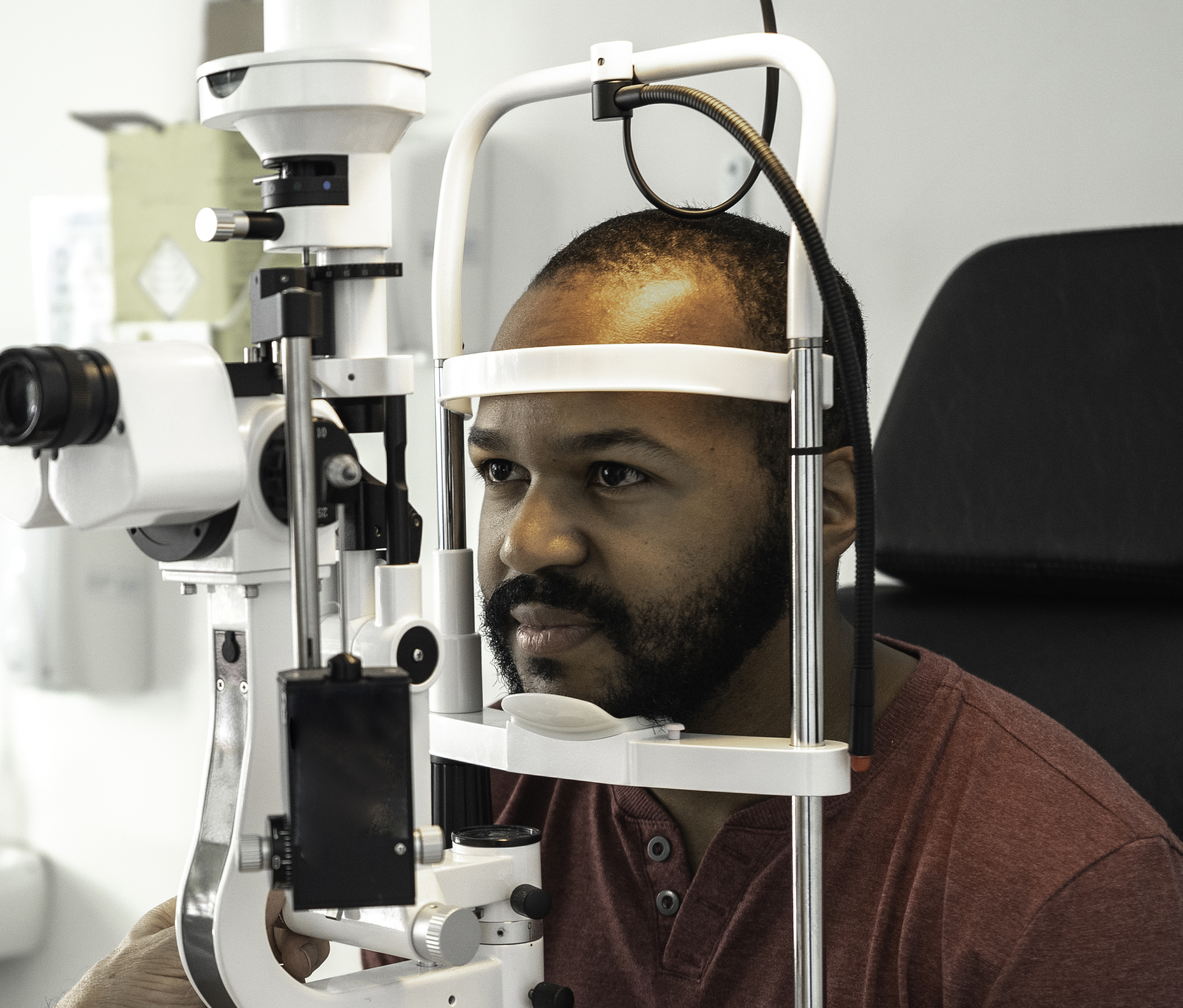 |
Future research aimed at describing the impact of glaucoma on Black individuals should include genetic associations, socioenvironmental exposures, downstream effects of racism, genetic ancestry and social determinants of health, the authors argued. Photo: Getty Images. |
Numerous studies have shown that the prevalence of glaucoma is disproportionately greater in Black adults compared to non-Hispanic white individuals. However, the practice of using race or ethnicity as a decisive variable in clinical decision-making has been on the decline in recent years, owing to the rise of so-called precision medicine, which takes into account the patient’s full genetic make-up as well as environmental and lifestyle factors. Such an approach is more nuanced than the stark and sometimes arbitrary categorization schemes that sort patients by self-reported ethnicity.
Where, then, does race stand today as a factor in glaucoma, specifically with regard to those traditionally categorized as Black? In a recent assessment for American Journal of Ophthalmology, two UCLA researchers aimed to provide updates on the scientific discoveries made and sociological theories that have allowed for a better understanding of this burden and to provide insights into future directions. They found that there is still deficient data on this group and more research has to be done, including genetic associations, socioenvironmental exposures, downstream effects of racism, genetic ancestry and social determinants of health.
A previous study of Medicaid and commercial insurance found that, irrespective of race and ethnicity, Medicaid recipients received less glaucoma testing compared to counterparts with commercial health insurance. Additionally, disparities in glaucoma testing were observed across all racial and ethnic groups, but were most notable for Black individuals.
Another study analyzing national Medicare data comparing rates of eye care utilization by racial and ethnic groups found that compared to non-Hispanic white beneficiaries, Black and Hispanic patients had lower rates of eye examinations, office visits, consultations and visual field and RNFL testing.
“These racial and ethnic disparities persisted even after stratifying their analyses by socioeconomic status, suggesting that other factors, such as systemic or structural racism, may be independently contributing to these observed disparities,” the authors noted in their paper.
There has been “bad and irresponsible science,” they say, regarding the first drug approved by the FDA marketed for a single racial or ethnic group—Black Americans—for the treatment of congestive heart failure. The drug BiDil (isosorbide dinitrate and hydralazine hydrochloride) was formulated and sold not based on scientific evidence showing that it was more effective in African Americans, but because it was a way to extend patent protection by 13 years, a study found.
“These examples illustrate the dangers of race-based medicine in obfuscating the line between race and genetic ancestry and perpetuating the false narrative that race is an essential, biological variable while translating it into clinical practice,” the authors explained in their AJO paper. “It also has the potential to deepen disparities by promoting racial and ethnic stereotyping. Race-based targeting of therapeutics should be rejected, while genomic-based design of drugs and recruitment to trials represents a more promising approach for improved efficiency of drug development. By the same token, it will be important to encourage and provide protections for diverse representation in these genetically selected clinical trial populations, a disparity that has not been sufficiently addressed in POAG clinical trials.”
Advances have been made, such as the completion of the mapping of the human genome that has provided access to an enormous amount of genomic data that estimates how variants affect disease risk. Polygenic risk scores that can be generated represent a potentially important tool, the authors noted. Despite these advances, there are still some gaps, as these scores may only be useful and the accuracy may only be valid for European ancestry populations, the researchers added. But they also believe that race will decline in significance as a clinical factor.
“We believe that race will become increasingly less relevant in medicine as the capacity to capture and analyze larger, more comprehensive data sets allow a greater focus on risk at the individual level,” the authors explained. Such data sets would incorporate socioeconomic factors as prominently as clinical ones, they noted.
“Though our understanding of the disparities in glaucoma in Black individuals has grown over the past decades, gaps persist, particularly due to deficient data driven by a lack of studies in this disproportionately burdened group,” the authors concluded. “Though the use of race as a variable may become increasingly less relevant with the rise of precision medicine, it remains a crucial, though flawed concept that continues to be our best means by which to measure, investigate and intervene upon these disparities in our efforts to achieve health equity.”
The authors concluded by encouraging the eyecare community “to be appropriately hesitant” in using race and ethnicity in their analyses and clinical decision-making, “understanding that it is a unique variable, fraught with complexities and pitfalls and yet also represents our best efforts to imperfectly capture socially driven disparities that have marked and measurable downstream biological impact.”
Kitayama K, Wilson RM. Glaucoma in Black individuals: how far have we come and where do we go from here? Amer J Ophthalmol. October 10, 2023. [Epub ahead of print.] |

